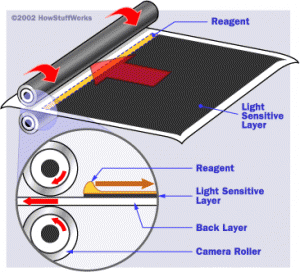How Do Instant Cameras Work
There’s a unique touch of design that comes with best instant cameras. This uniqueness not only affects how they look but also how they work. What makes these cameras remarkable is their inbuilt developing studio. They thus simplify the process of taking pictures as this technology makes it possible to develop photos instantly. In order to fully understand how instant cameras work, it’s important to know about the photographic film.
What Is A Photographic Film?
This is basically a sheet of plastic (clear) that is coated with light-sensitive silver compounds. The difference in black and white and colored films is the number of layers. Colored films have three layers while black and white films have a single layer. A chemical record of the color pattern is formed by exposing the layers to light results. The next step would be the development of the film to turn it into a picture.
Components Of Instant Camera
A look at the exterior of instant cameras may not reveal a lot about its uniqueness. It looks much the same as traditional cameras. The secret lies in its interior. This is a camera that is designed to perform all the tasks necessary in photography. Instant cameras typically come with instant films. These films are formed of several layers. The layers are stacked on top of each other.
The first layer is the clear plastic layer. This is followed by the acid layer. Next is the timing layer followed by the image layer. Finally, comes the dye developers. These developers are placed on top of a black colored base layer. The cameras also have a reagent layer placed between the image layer and dye developers. This is the layer that initiates the process of developing photos.
Processing The Film In Instant Cameras
The components that can be said to be most important in the processing process are the reagents. This is basically a mix of white pigment, alkali, opacifiers and other elements. The reagent’s place in the camera is in the layer above the light sensitive layers and below the image layer. Before an image is taken, the reagent stays as a blob away from the light sensitive material. This ensures that the film doesn’t develop before it’s exposed.

Once you take the picture, the film sheet is released through a pair of rollers. It is the rollers that will spread the reagent material between the light-sensitive layer and the image layer. The reagent reacts with the chemical layer in the film. The role of the opacifier material is stopping the light from filtering to the layers below. This ensures that the film is not fully exposed for efficient development.
How Photos Are Produced
The layering of the reagents is the first steps towards the production of photos. Once the reagents have been layered, the silver compounds get catalyzed. In the first few seconds, the image will seem to be grayish. The light-sensitive layers react with the color wavelength falling on them. These colors have different intensities and this is what gives rise to the colors in the photo.
The acid layer plays a crucial role as it reacts with chemicals in the reagent. The timing layer, on the other hand, slows the reagent down. This gives the image ample time to develop. As the chemical reactions proceed, the colors will be seen on the photographic paper. This means that the photograph is ready to leave the camera. Exposing the photograph to light makes the light blockers clear away leaving a clearly visible photo with all colors perfectly placed.
Wrapping It Up
Instant cameras are a great option especially now that color photos are trending. They allow you take photos and process them without having to carry around additional machinery. The prints are fine and the cameras offer useful exposure control. It, however, comes with a fixed film size. This means that you cannot get varying image sizes. The film replacement is also costly.
It will be a great idea investing in these cameras more so now that you know how they work. This is not to mention that they are relatively cheaper compared to the digital cameras that have been threatening to sweep instant cameras off the market.

